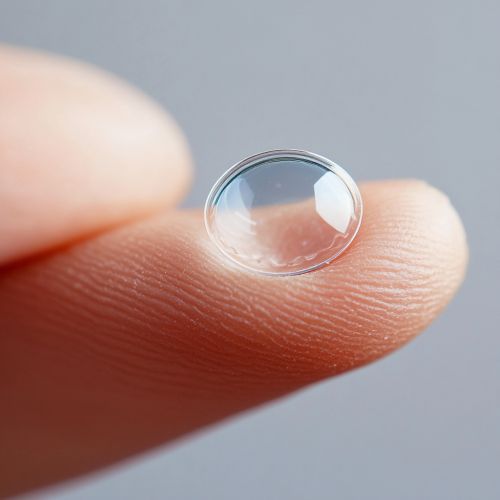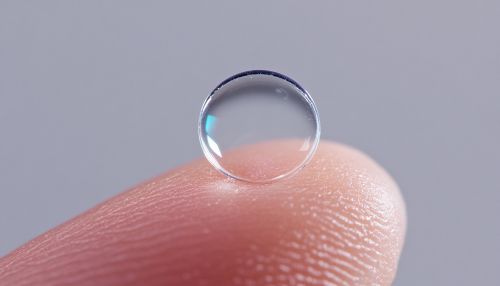@evolution of contact lens technology
Introduction
The evolution of contact lens technology is a fascinating journey that spans centuries, reflecting significant advancements in optics, materials science, and medical technology. Contact lenses, which are thin lenses placed directly on the surface of the eyes, have transformed from rudimentary glass shells to sophisticated devices capable of correcting a wide range of refractive errors and even delivering medication. This article delves into the historical development, technological innovations, and future prospects of contact lens technology.
Historical Background
Early Concepts and Developments
The concept of contact lenses dates back to the 16th century when Leonardo da Vinci sketched ideas for altering corneal power. However, it wasn't until the late 19th century that practical developments began. In 1888, Adolf Gaston Eugen Fick and Eugene Kalt independently created the first contact lenses made from blown glass. These early lenses were large, covering the entire sclera, and were primarily used for therapeutic purposes rather than vision correction.
Transition to Plastic Lenses
The transition from glass to plastic lenses marked a pivotal moment in contact lens technology. In the 1930s, William Feinbloom introduced lenses made from polymethyl methacrylate (PMMA), a lightweight and more comfortable material. This innovation led to the development of corneal lenses, which were smaller and rested on the cornea rather than the sclera. The introduction of PMMA lenses laid the foundation for modern contact lens design.
Technological Advancements
Soft Contact Lenses
The invention of soft contact lenses in the 1960s by Otto Wichterle revolutionized the industry. Made from hydrogel, these lenses offered greater comfort and oxygen permeability compared to rigid lenses. The development of soft lenses was facilitated by the synthesis of hydrophilic polymers, which allowed lenses to retain water and remain flexible. This breakthrough expanded the market for contact lenses, making them accessible to a broader audience.


Gas Permeable Lenses
In the late 1970s, gas permeable (GP) lenses were introduced as an alternative to PMMA lenses. These lenses combined the durability of rigid lenses with the comfort of soft lenses. Made from materials such as silicone acrylate and fluorosilicone acrylate, GP lenses allowed for greater oxygen transmission, reducing the risk of hypoxia and corneal edema. The development of GP lenses addressed many of the limitations of earlier rigid lenses, offering improved visual acuity and corneal health.
Silicone Hydrogel Lenses
The introduction of silicone hydrogel lenses in the late 1990s represented another significant advancement. These lenses offered even higher oxygen permeability than traditional hydrogel lenses, allowing for extended wear and reducing the risk of complications associated with overnight use. The combination of silicone and hydrogel materials provided a balance of comfort, flexibility, and breathability, making them a popular choice for both daily and extended wear.
Specialized Contact Lenses
Toric Lenses
Toric lenses are designed to correct astigmatism, a common refractive error caused by an irregularly shaped cornea. Unlike spherical lenses, toric lenses have different powers in different meridians, allowing them to correct the uneven curvature of the cornea. The development of toric lenses has enabled individuals with astigmatism to achieve clear vision without the need for glasses.
Multifocal Lenses
Multifocal contact lenses are designed for individuals with presbyopia, a condition that affects the eye's ability to focus on close objects. These lenses incorporate multiple zones of varying power, allowing the wearer to see clearly at different distances. The design of multifocal lenses can vary, with some using concentric rings of power and others employing a gradual transition of power across the lens surface.
Orthokeratology Lenses
Orthokeratology (ortho-k) lenses are specialized rigid lenses worn overnight to temporarily reshape the cornea and correct myopia. These lenses are designed to flatten the central cornea, reducing its refractive power and allowing for clear vision during the day without the need for corrective lenses. Ortho-k lenses have gained popularity as a non-surgical alternative to laser eye surgery for myopia correction.
Therapeutic and Novel Applications
Drug-Delivering Lenses
Recent advancements in contact lens technology have explored the potential for drug delivery. Researchers are developing lenses capable of releasing medication directly to the eye, offering a more efficient and controlled method of treatment compared to traditional eye drops. These drug-delivering lenses have the potential to treat a variety of ocular conditions, including glaucoma, dry eye, and infections.
Smart Contact Lenses
Smart contact lenses represent the frontier of contact lens technology. These lenses incorporate electronic components, such as sensors and microchips, to monitor physiological parameters and provide real-time data. Potential applications include glucose monitoring for individuals with diabetes, intraocular pressure measurement for glaucoma patients, and augmented reality displays. The development of smart lenses involves overcoming challenges related to miniaturization, power supply, and biocompatibility.
Future Prospects
The future of contact lens technology is poised for exciting developments. Advances in material science, nanotechnology, and electronics are expected to drive further innovations in lens design and functionality. Researchers are exploring the use of biomimetic materials to enhance lens comfort and performance, as well as the integration of wireless communication technologies for seamless data transmission. As these technologies mature, contact lenses are likely to play an increasingly important role in both vision correction and healthcare monitoring.
Conclusion
The evolution of contact lens technology reflects a remarkable journey of innovation and adaptation. From the early glass lenses to the sophisticated devices of today, contact lenses have transformed the way we correct vision and manage ocular health. As research and development continue to push the boundaries of what is possible, the future of contact lenses promises to be as dynamic and transformative as its past.
